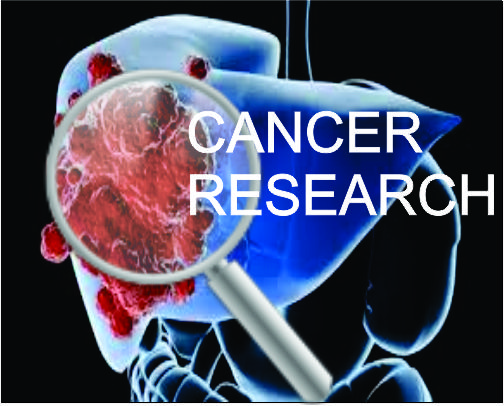- Home
- Medical news & Guidelines
- Anesthesiology
- Cardiology and CTVS
- Critical Care
- Dentistry
- Dermatology
- Diabetes and Endocrinology
- ENT
- Gastroenterology
- Medicine
- Nephrology
- Neurology
- Obstretics-Gynaecology
- Oncology
- Ophthalmology
- Orthopaedics
- Pediatrics-Neonatology
- Psychiatry
- Pulmonology
- Radiology
- Surgery
- Urology
- Laboratory Medicine
- Diet
- Nursing
- Paramedical
- Physiotherapy
- Health news
- Fact Check
- Bone Health Fact Check
- Brain Health Fact Check
- Cancer Related Fact Check
- Child Care Fact Check
- Dental and oral health fact check
- Diabetes and metabolic health fact check
- Diet and Nutrition Fact Check
- Eye and ENT Care Fact Check
- Fitness fact check
- Gut health fact check
- Heart health fact check
- Kidney health fact check
- Medical education fact check
- Men's health fact check
- Respiratory fact check
- Skin and hair care fact check
- Vaccine and Immunization fact check
- Women's health fact check
- AYUSH
- State News
- Andaman and Nicobar Islands
- Andhra Pradesh
- Arunachal Pradesh
- Assam
- Bihar
- Chandigarh
- Chattisgarh
- Dadra and Nagar Haveli
- Daman and Diu
- Delhi
- Goa
- Gujarat
- Haryana
- Himachal Pradesh
- Jammu & Kashmir
- Jharkhand
- Karnataka
- Kerala
- Ladakh
- Lakshadweep
- Madhya Pradesh
- Maharashtra
- Manipur
- Meghalaya
- Mizoram
- Nagaland
- Odisha
- Puducherry
- Punjab
- Rajasthan
- Sikkim
- Tamil Nadu
- Telangana
- Tripura
- Uttar Pradesh
- Uttrakhand
- West Bengal
- Medical Education
- Industry
New phototherapy system can help fight cancer

Researchers have developed a new phototherapy system that makes cancer cells glow when exposed to near-infrared light, so a surgeon can identify the cancer and more effectively remove it.
Phototherapy is the use of light in the treatment of physical or mental illness.
The new approach uses a single chemical compound, silicon naphthalocyanine, that has both diagnostic and therapeutic value, the researchers said.
At the same time, this compound creates heat within any remaining cancer cells, killing them in the process.
In tests completed with laboratory animals, tumours were completely eradicated without side effects, and did not return, the researchers said
"This system that can make cancer cells glow is like giving the surgeon an extra pair of eyes," said lead author of the study Olena Taratula, research assistant professor at Oregon State University in the US.
"And the compound we are working with now is inexpensive and appears effective at killing any cancer cells that remain," she said.
When perfected, researchers believe that the evolving field of phototherapy may become a new and promising addition to the three primary ways that most cancer is treated today: surgery, radiation and/or chemotherapy.
Phototherapy clearly has the potential to make some of those approaches more effective than they already are, the study said.
Research so far has studied ovarian cancers in laboratory animals, but the researchers said that conceptually the treatment may also be useful for other solid tumours.
The findings were published in the journal Chemistry of Materials, a publication of the American Chemical Society.
Phototherapy is the use of light in the treatment of physical or mental illness.
The new approach uses a single chemical compound, silicon naphthalocyanine, that has both diagnostic and therapeutic value, the researchers said.
At the same time, this compound creates heat within any remaining cancer cells, killing them in the process.
In tests completed with laboratory animals, tumours were completely eradicated without side effects, and did not return, the researchers said
"This system that can make cancer cells glow is like giving the surgeon an extra pair of eyes," said lead author of the study Olena Taratula, research assistant professor at Oregon State University in the US.
"And the compound we are working with now is inexpensive and appears effective at killing any cancer cells that remain," she said.
When perfected, researchers believe that the evolving field of phototherapy may become a new and promising addition to the three primary ways that most cancer is treated today: surgery, radiation and/or chemotherapy.
Phototherapy clearly has the potential to make some of those approaches more effective than they already are, the study said.
Research so far has studied ovarian cancers in laboratory animals, but the researchers said that conceptually the treatment may also be useful for other solid tumours.
The findings were published in the journal Chemistry of Materials, a publication of the American Chemical Society.
Meghna A Singhania is the founder and Editor-in-Chief at Medical Dialogues. An Economics graduate from Delhi University and a post graduate from London School of Economics and Political Science, her key research interest lies in health economics, and policy making in health and medical sector in the country. She is a member of the Association of Healthcare Journalists. She can be contacted at meghna@medicaldialogues.in. Contact no. 011-43720751
Next Story


